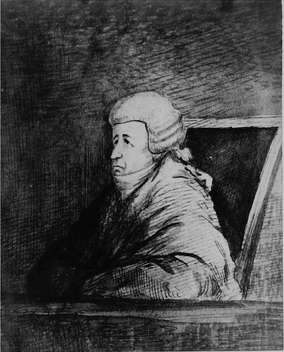Adam Gillies, Lord Gillies on:
[Wikipedia]
[Google]
[Amazon]


 Adam Gillies, Lord Gillies (1760–1842) was a Scottish judge.
Adam Gillies, Lord Gillies (1760–1842) was a Scottish judge.

 Adam Gillies, Lord Gillies (1760–1842) was a Scottish judge.
Adam Gillies, Lord Gillies (1760–1842) was a Scottish judge.
Life
He was born inBrechin
Brechin (; gd, Breichin) is a city and former Royal burgh in Angus, Scotland. Traditionally Brechin was described as a city because of its cathedral and its status as the seat of a pre-Reformation Roman Catholic diocese (which continues today ...
, Forfarshire on 29 April 1766, the son of Margaret (née Smith) and Robert Gillies, he was the younger brother of historian John Gillies.
Gillies was admitted an advocate
An advocate is a professional in the field of law. Different countries' legal systems use the term with somewhat differing meanings. The broad equivalent in many English law–based jurisdictions could be a barrister or a solicitor. However, ...
on 14 July 1787. From 1806, he was the sheriff
A sheriff is a government official, with varying duties, existing in some countries with historical ties to England where the office originated. There is an analogous, although independently developed, office in Iceland that is commonly transla ...
-depute of Kincardineshire
Kincardineshire, also known as the Mearns (from the Scottish Gaelic meaning "the Stewartry"), is a historic county, registration county and lieutenancy area on the coast of northeast Scotland. It is bounded by Aberdeenshire on the north and w ...
. From 1811 to 1842, he was a Senator of the College of Justice
The senators of the College of Justice are judges of the College of Justice, a set of legal institutions involved in the administration of justice in Scotland. There are three types of senator: Lords of Session (judges of the Court of Session); ...
, based in Edinburgh
Edinburgh ( ; gd, Dùn Èideann ) is the capital city of Scotland and one of its 32 Council areas of Scotland, council areas. Historically part of the county of Midlothian (interchangeably Edinburghshire before 1921), it is located in Lothian ...
. In the 1830s he is listed as living at 16 York Place in Edinburgh's New Town
The New Town is a central area of Edinburgh, the capital of Scotland. It was built in stages between 1767 and around 1850, and retains much of its original neo-classical and Georgian period architecture. Its best known street is Princes Street ...
.
In the late 18th century he was a member of the Crochallan Fencibles
The Crochallan Fencibles was an 18th-century Edinburgh convivial men's club that met in Daniel ("Dawney") Douglas's tavern on Anchor Close, a public house off the High Street (part of the Royal Mile). The 16th century doorway bore the inscription ...
, a club which met at Dawney's Tavern on Anchor Close in Edinburgh.
Gillies married Elizabeth Carnegy, a Unitarian, and from 1811 their nieces Margaret
Margaret is a female first name, derived via French () and Latin () from grc, μαργαρίτης () meaning "pearl". The Greek is borrowed from Persian.
Margaret has been an English name since the 11th century, and remained popular througho ...
(1803-1887) and Mary Gillies
Mary Gillies (16 June 1800 – 20 July 1870) was a British children's author, and sister of the artist Margaret Gillies.
Early life
Mary Gillies was born in London on 16 June 1800, the eldest daughter of William Gillies, a Scottish merchant ...
(1800-1870), came to live with them from London. The girls were educated by Lord and Lady Gillies and introduced into Edinburgh society. During their time in Edinburgh the two girls were introduced to Thomas Southwood Smith
Thomas Southwood Smith (17881861) was an English physician and sanitary reformer.
Early life
Smith was born at Martock, Somerset, into a strict Baptist family, his parents being William Smith and Caroline Southwood. In 1802 he won a scholarshi ...
, the powerful new preacher to the Unitarian congregation at Skinners' Hall, Canongate
The Canongate is a street and associated district in central Edinburgh, the capital city of Scotland. The street forms the main eastern length of the Royal Mile while the district is the main eastern section of Edinburgh's Old Town. It began ...
, who was to play a large part in their later lives.
Gillies retired due to ill health in the summer of 1842. His position as Senator was filled by Alexander Wood, Lord Wood.
He died on 24 December 1842 at Leamington Spa
Royal Leamington Spa, commonly known as Leamington Spa or simply Leamington (), is a spa town and civil parish in Warwickshire, England. Originally a small village called Leamington Priors, it grew into a spa town in the 18th century following ...
.
His body was returned to Edinburgh
Edinburgh ( ; gd, Dùn Èideann ) is the capital city of Scotland and one of its 32 Council areas of Scotland, council areas. Historically part of the county of Midlothian (interchangeably Edinburghshire before 1921), it is located in Lothian ...
and he was buried in a private vault in the now sealed south-west section of Greyfriars Kirkyard
Greyfriars Kirkyard is the graveyard surrounding Greyfriars Kirk in Edinburgh, Scotland. It is located at the southern edge of the Old Town, adjacent to George Heriot's School. Burials have been taking place since the late 16th century, and a num ...
known as the Covenanter's Prison. His wife Elizabeth lies with him.
See also
* List of historic Senators of the College of JusticeReferences
{{DEFAULTSORT:Gillies, Adam 1760 births 1842 deaths 18th-century Scottish people 19th-century Scottish people People from Brechin Senators of the College of Justice Burials at Greyfriars Kirkyard